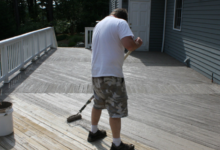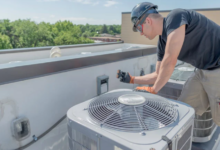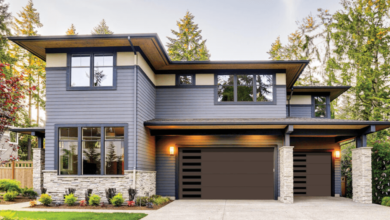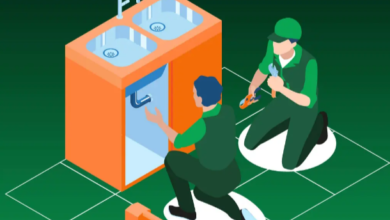What Factors Affect AC Repair Estimates?
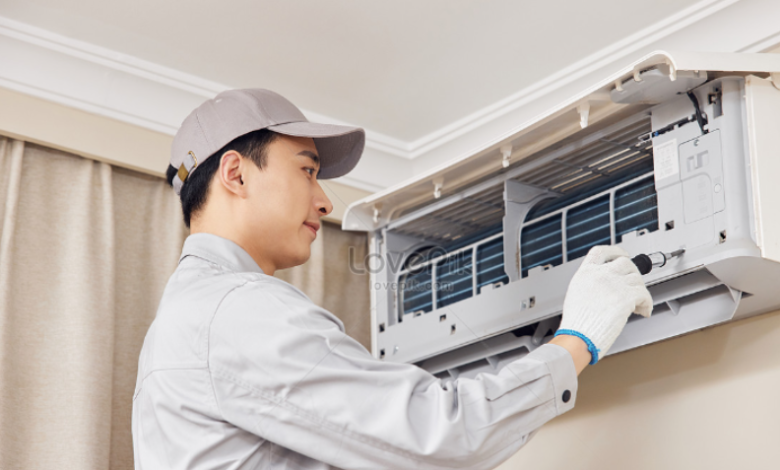
AC repair estimates depend on several factors, such as the type of issue, the unit’s age, and the cost of replacement parts. Labor rates, repair complexity, emergency service needs, and local market conditions also affect pricing. Understanding these elements helps homeowners make informed decisions—get a quote from Beltway Air Conditioning & Heating for your AC repair needs, as outlined in the sections below.
Key Factors Influencing AC Repair Estimates
The price of AC repair differs by system type, size, and issue complexity. Older or uncared-for units are more costly to fix. Peak season demand and emergency services will also increase repair prices.
Type of AC System
The air conditioning system type has a significant impact on repair expenditures. For example:
- Central AC systems usually range from $150–$650 to repair, considering their size and complexity.
- Ductless mini-split models, which require specialized tools and knowledge, can cost $250–$900.
- Window and portable units tend to be the cheapest to repair.
- Commercial systems are pricier by their size and have more technical requirements.
Discontinued or older models may also cost more to repair, since the parts are harder to find and repair work takes longer.
Unit Size and Efficiency
Larger AC units will have more expensive components. To give an example, a replacement compressor for a big central system could cost more than $2,000. High-efficiency systems, while more energy efficient, typically involve advanced technology that makes the price of repairs higher.
Although lower in cost initially, small systems can need servicing more often. Yet, high-efficiency systems usually recoup the cost of repairs through reduced utility bills over a period of time.
Age and Maintenance History
Age is a reliable predictor of repair costs. Machines over 10 years old consistently experience high degrees of common wear and tear, hence more frequent and expensive repairs. Failure to maintain—such as skipped tune-ups or skipped filter changes—can lead to run-expensive issues such as refrigerant leaks, ranging from $200 to more than $1,500.
On the contrary, units that have regular professional maintenance require fewer repairs and are less expensive to maintain in the long term.
Complexity of the Issue
Regular repairs, such as replacing capacitors ($150–$400), are generally inexpensive. More complicated issues—such as electrical or compressor breakdowns—require more time in labor, specialized tools, and diagnostic time, which altogether contribute to the total expense bill.
Sometimes hidden problems are revealed in the course of repairs that can increase the ultimate price tag.
Seasonal and Emergency Needs
Repair costs tend to hike during peak times, especially in summer when HVAC systems are in high demand. Off-season repairs are relatively cheaper.
Emergency service—particularly on weekends, evenings, or holidays—usually carries extra service charges. Homeowners in need of immediate repair can expect to pay more for quicker response.
See also: The Journey to Building Your Dream Home in Sacramento
The Role of Labor and Installation Costs
Labor and installation constitute a majority of AC repair expenses, varying with local rates, technician skill, and job complexity. Urban locations and highly skilled technicians are usually higher cost but provide more reliability. Hard installations or labor-intensive repairs can substantially increase overall costs.
Regional Labor Rates
Labor expenses are ubiquitous. City areas will be more expensive as a result of higher demand and cost of living, and country areas can be cheaper. For instance, installation labor for a new HVAC system in a big city may be 20–30% higher than that in small towns.
Local economic conditions and the availability of qualified technicians also affect pricing. By comparing contractor bids within the same area, homeowners can determine reasonable rates without compromising quality.
Technician Expertise
Trained, certified technicians cost more, but they offer quality work and fewer follow-up calls. For instance, NATE-certified professionals are trained to make accurate, code-compliant repairs on the first try.
Alternatively, an untrained technician may save money upfront but create a breakdown in the future or a dangerous repair.
Installation Challenges
How difficult the installation or repair is can drive up labor costs. Units in inconvenient locations, such as attics or tight crawl spaces, could take longer and more equipment to reach. Older systems with fewer accessible points may require extra disassembly processes.
For example, repairing a system in an inaccessible location might add additional hours of work. Planning installation, including simple access, will pay off now and in the long run.
Labor-Intensive Repairs
Repairs that include extensive labor, like addressing issues throughout the HVAC system or replacing primary components, of course, take longer. This extra time makes the total repair expenses swell, which can account for half of the average cost of repairing an AC.
Impact of Replacement Parts and Availability
The effect of replacement parts availability and quality on accurate AC repair quotes is tremendous. Prices depend greatly on system model, manufacturer, and condition, as well as parts reliability.
Cost of Components
Compressor and evaporator coils are some of the most costly components:
- Compressors: $800–$1,200 (premium); $400–$700 (generic)
- Evaporator Coils: $600–$1,000 (premium); $300–$500 (generic)
Whereas generic components are cheaper in the short run, they can lower efficiency or reduce system life. Spending on quality components can prevent future failure and associated labor costs.
Brand and Model Specificity
Some HVAC systems have proprietary parts that are more expensive and harder to replace. Discontinued or older models mean purchasing rebuilt or special parts, which take longer and cost more.
While choosing a system, residents need to consider long-term support and parts availability as part of the investment.
Hidden Issues During Repairs
When repaired, technicians may find issues like worn-out wires, moldy ducts, or over-pressurized refrigerant. Such hidden complications will contribute to the final expenses but must be addressed for ideal long-term operation.
Regular servicing and maintenance will identify such problems before they arise, preventing unexpected costs.
Importance of Diagnostic Fees and Inspections
Diagnostic charges and inspections assist in the accurate detection of AC problems and inform intelligent repair choices. They disclose concealed faults and facilitate open pricing. Timely diagnostics avert expensive failures and enhance long-term performance.
Initial Inspection Scope
Skilled Inspections usually cover assessing:
- Refrigerant levels
- Electrical connections
- Coil condition
- Airflow performance
- Duct integrity
Technicians may use equipment like pressure gauges or heat sensors to identify slight inefficiencies or future issues. Proper inspection helps homeowners better order repairs and steer clear of unnecessary expenses.
Transparent Pricing Practices
Responsible HVAC businesses provide transparent, itemized estimates of repair costs. For instance, a $100 diagnostic charge normally includes labor and tool usage, and is generally applied to the final cost of repairs in case the estimate gets approved.
Homeowners can steer clear of builders who will not offer open-book pricing—it’s usually a warning sign.
Identifying Underlying Problems
Good diagnostics reveal root causes like refrigerant leaks, worn electrical parts, or compromised compressors. Repairing these root issues not only avoids repeat repairs but also saves other system components from failure.
Preventive Value of Inspections
Early detection plays a preventative role. By finding the issue before it becomes critical, homeowners are able to avoid costly emergency repairs, reduce downtime, and extend the life of their HVAC system.
What Drives the Final AC Repair Estimate?
AC repair costs are affected by labor, replacement components, type of system, inspections, and availability. Labor varies by location and technician proficiency. Replacement components are based on the age and model of the system, whereas inspections and labor for diagnostics ensure proper repair is completed.
Homeowners who possess service agreements or warranties may also have lower costs. By comparing detailed quotes from known providers like Beltway Air Conditioning & Heating, homeowners will be well-organized and in control of their expenditures.
Well-established maintenance remains the least expensive way to avoid surprise repairs. Taking the initiative and being informed is the best way to secure easy and affordable AC service year after year.

